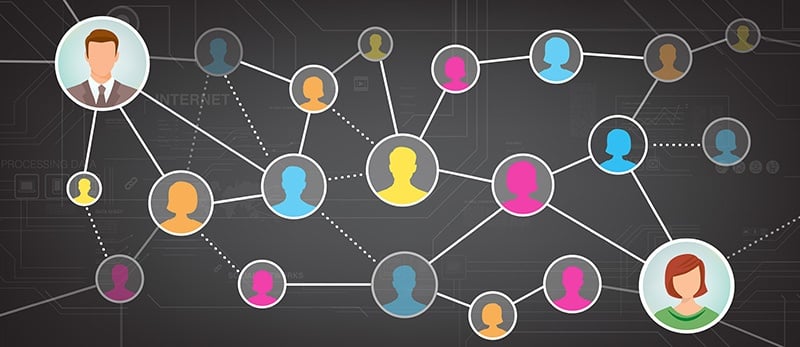How to Get More People to Share Your Blog Posts
The whole goal of creating blog posts is to get people to read them and to share them so others will read and share. But this goal is getting more...


Personalization and targeted outreach are key to engaging your audience and driving conversions. HubSpot's list feature is a powerful tool that enables marketers to segment their contacts effectively and deliver tailored messages.
In this blog post, we explore the different types of HubSpot lists, strategies for segmenting your audience, and how to leverage these lists to enhance your marketing efforts.
HubSpot offers two main types of lists: Static Lists and Active Lists. Understanding the differences and applications of each is crucial for effective list management.
Static lists are snapshots of a group of contacts at a specific time. Once a static list is created, the contacts remain unchanged unless manually updated. These lists are useful for:
One-time Email Campaigns: Sending a specific email to a defined group of contacts.
Event Invitations: Inviting a fixed group of contacts to an event.
Temporary Segmentation: Grouping contacts for a short-term purpose.
Active lists are dynamic and automatically updated based on set criteria. When a contact meets the criteria, they are added to the list; if they no longer meet the criteria, they are removed. These lists are ideal for:
Ongoing Campaigns: Continuously targeting contacts who meet certain conditions (e.g., subscribers who haven't engaged in the last 30 days).
Lead Nurturing: Creating segments that evolve as contacts move through the buyer’s journey.
Behavioral Targeting: Adjusting lists based on real-time behavior (e.g., visiting a pricing page).
Creating effective lists requires a clear understanding of your marketing goals and the specific attributes of your audience. Here’s a step-by-step guide to creating powerful HubSpot lists:
Determine the purpose of your list. Are you targeting new leads, nurturing existing customers, or re-engaging inactive subscribers? Clear goals will guide the criteria you set for your lists.
Identify the attributes and behaviors that define your target segments. Common criteria include:
Demographics: Age, gender, location, job title.
Behavioral Data: Website visits, email opens, form submissions.
Lifecycle Stage: Lead, Marketing Qualified Lead (MQL), Sales Qualified Lead (SQL), Customer.
Navigate to the Lists tool in HubSpot and choose whether to create a Static or Active list. Define your criteria using filters and segmentation rules. HubSpot’s intuitive interface allows you to combine multiple conditions to refine your lists precisely.
For active lists, regularly review the criteria to ensure they still align with your marketing goals. Update static lists as needed to keep them relevant.
Effective segmentation allows you to deliver more personalized and relevant content to your audience. Here are some strategies to consider:
Segmenting based on demographic data helps tailor your messages to specific audience characteristics. For example, you can create lists for different age groups, geographic locations, or job roles to personalize content and offers.
Behavioral data provides insights into how contacts interact with your brand. Segment based on website visits, email engagement, or purchase history to send targeted messages that resonate with their interests and actions.
Group contacts by their level of engagement with your brand. Create segments for highly engaged contacts, moderately engaged contacts, and inactive contacts. Tailor your outreach to re-engage or reward them accordingly.
Align your marketing efforts with the buyer’s journey by segmenting contacts into different lifecycle stages. Develop specific content and offers for leads, MQLs, SQLs, and existing customers to nurture them effectively through the sales funnel.
HubSpot lists are not just for segmentation; they can power various marketing activities to enhance your overall strategy. Here’s how:
Use HubSpot lists to send targeted email campaigns. Personalize your emails based on the recipient's segment to increase open rates and engagement. For example, send tailored content to new leads, exclusive offers to loyal customers, and re-engagement emails to inactive subscribers.
Integrate HubSpot lists with your advertising platforms to create custom audiences. Target specific segments with personalized ads on platforms like Facebook, Google, and LinkedIn. This ensures your ads are seen by the most relevant audience, improving ad performance and ROI.
Automate your lead nurturing process using HubSpot lists in workflows. Create dynamic lists for different stages of the buyer’s journey and set up workflows to deliver the right content at the right time. This will keep your leads engaged and move them closer to conversion.
Use HubSpot lists to segment your audience for detailed reporting and analysis. Understand how different segments respond to your marketing efforts, identify trends, and make data-driven decisions to optimize your strategy.
HubSpot lists are a powerful tool for targeted marketing, enabling you to segment your audience, personalize your messaging, and drive engagement.
By understanding the types of lists, creating them effectively, and leveraging them across various marketing activities, you can enhance your overall strategy and achieve better results.

The whole goal of creating blog posts is to get people to read them and to share them so others will read and share. But this goal is getting more...

1 min read
Today we have a guest post from Mike Donnelly. Mike is the founder of Seventh Sense, a SaaS platform designed to plug into your Hubspot account and...

Businesses have more options for working with, and marketing, to their customers than ever before. With as many options as there are, it’s easy to...